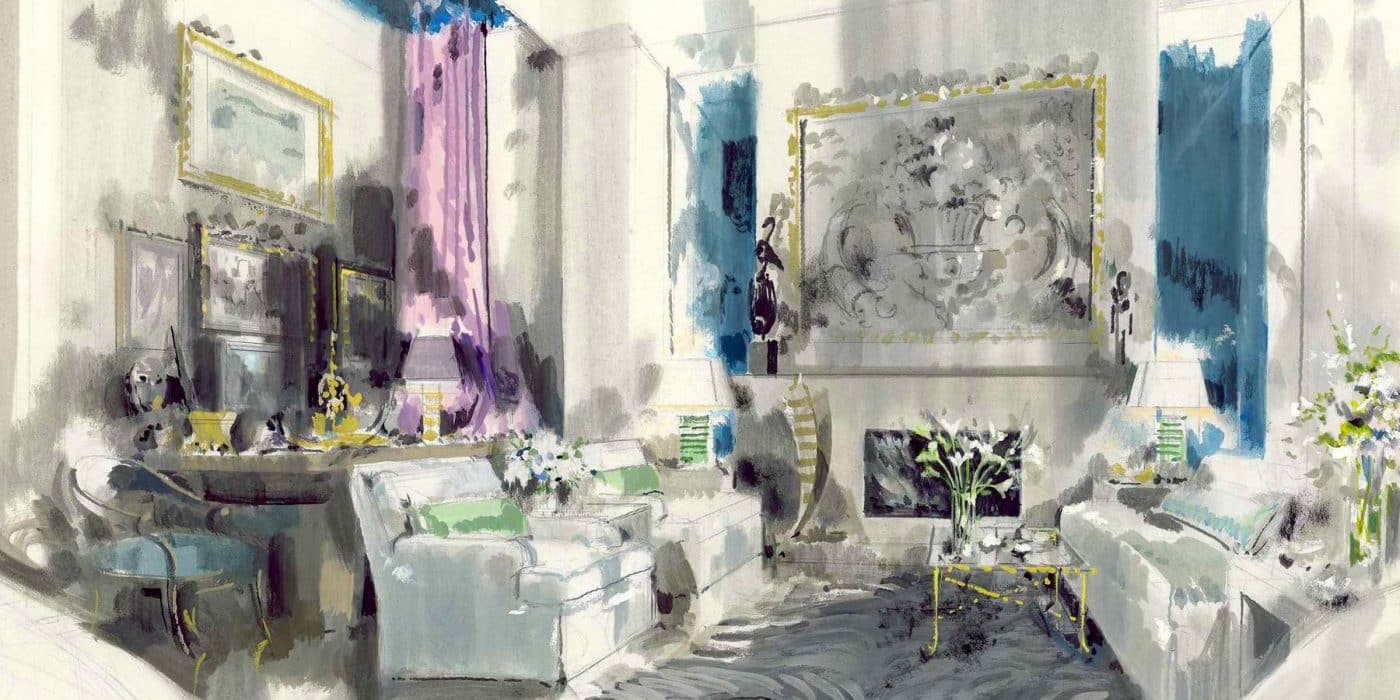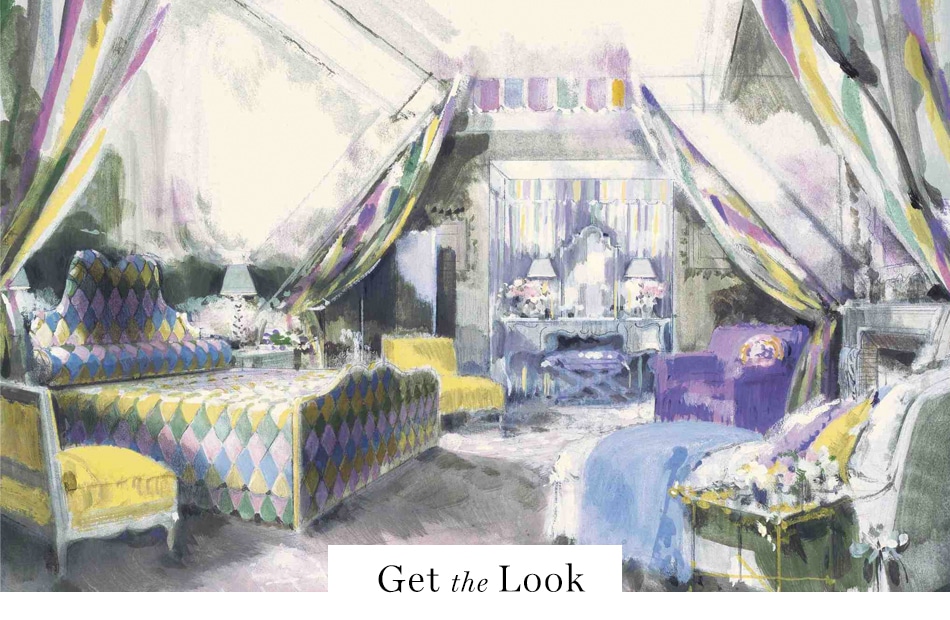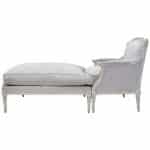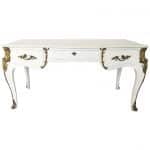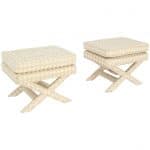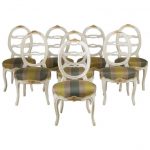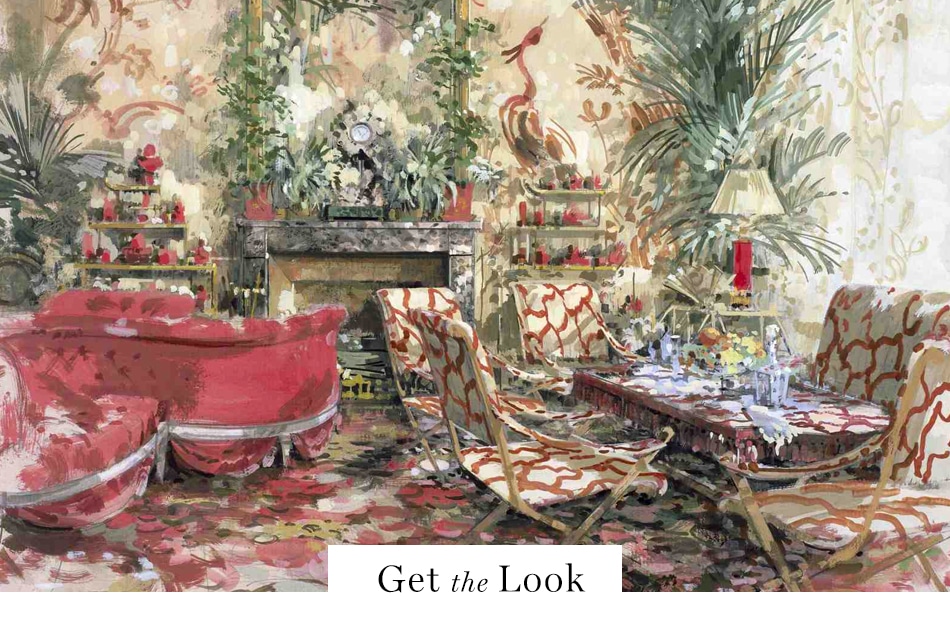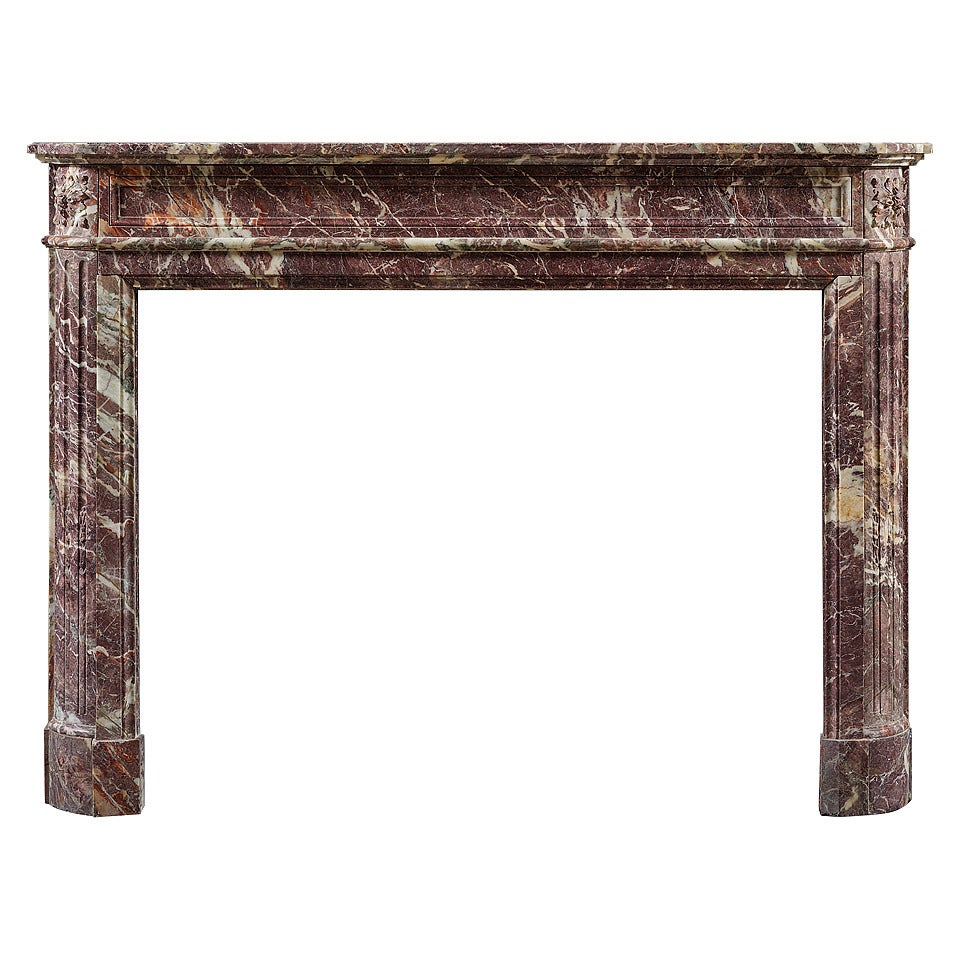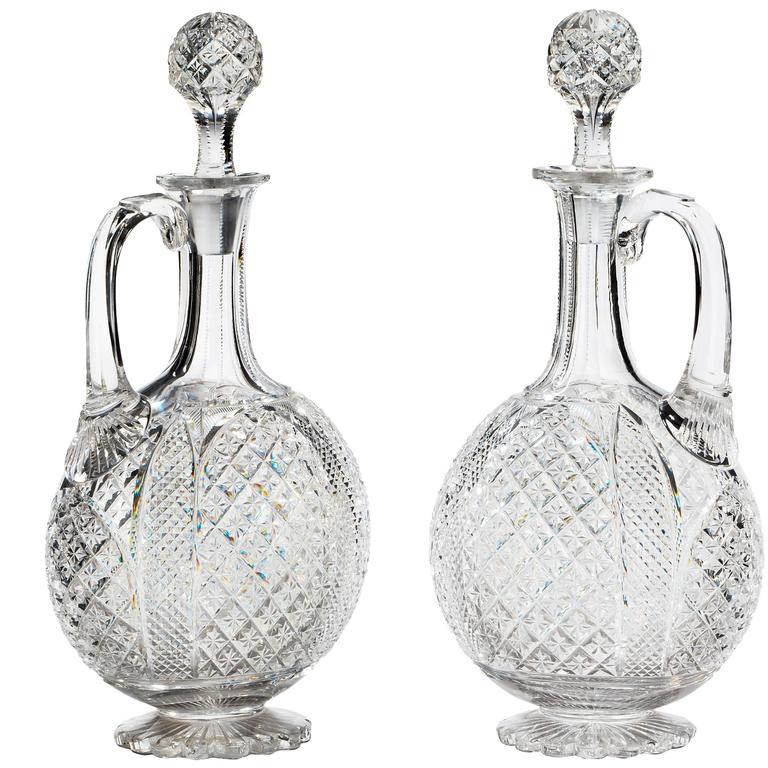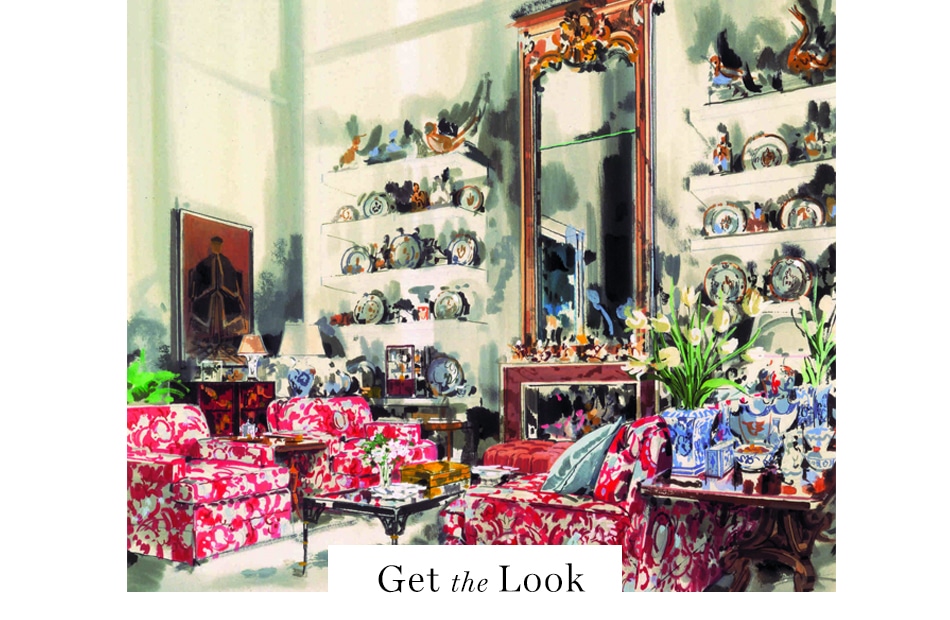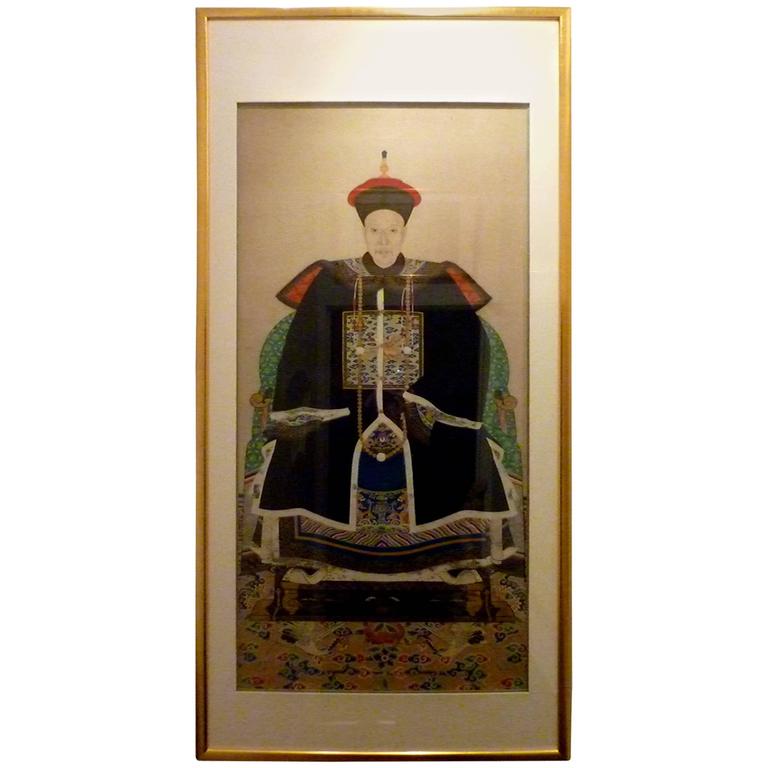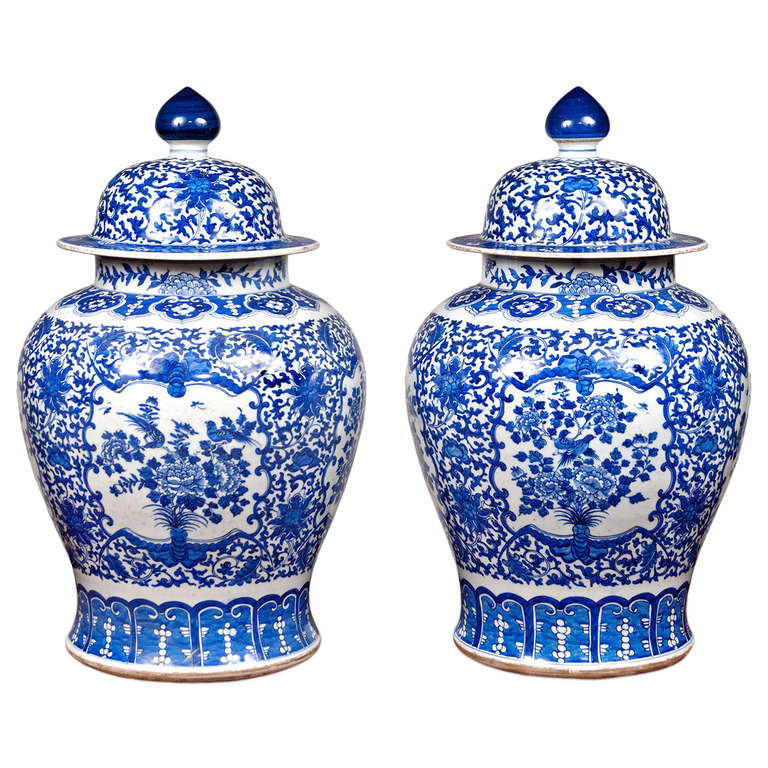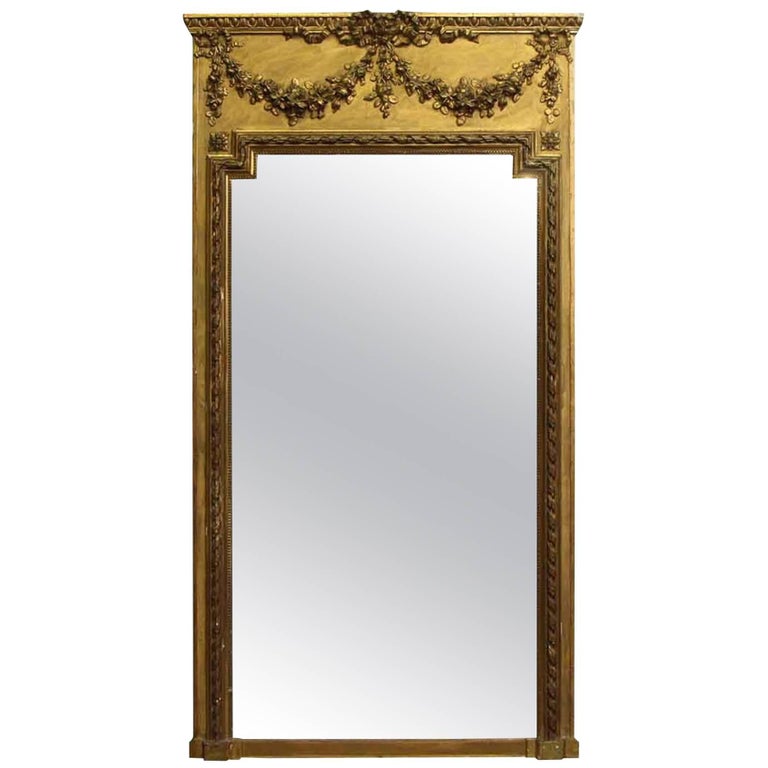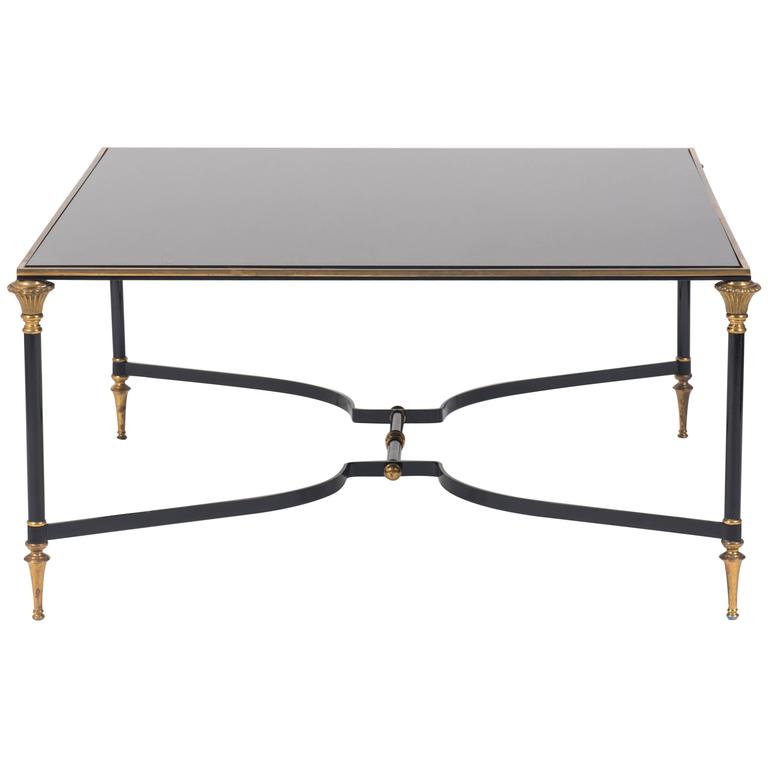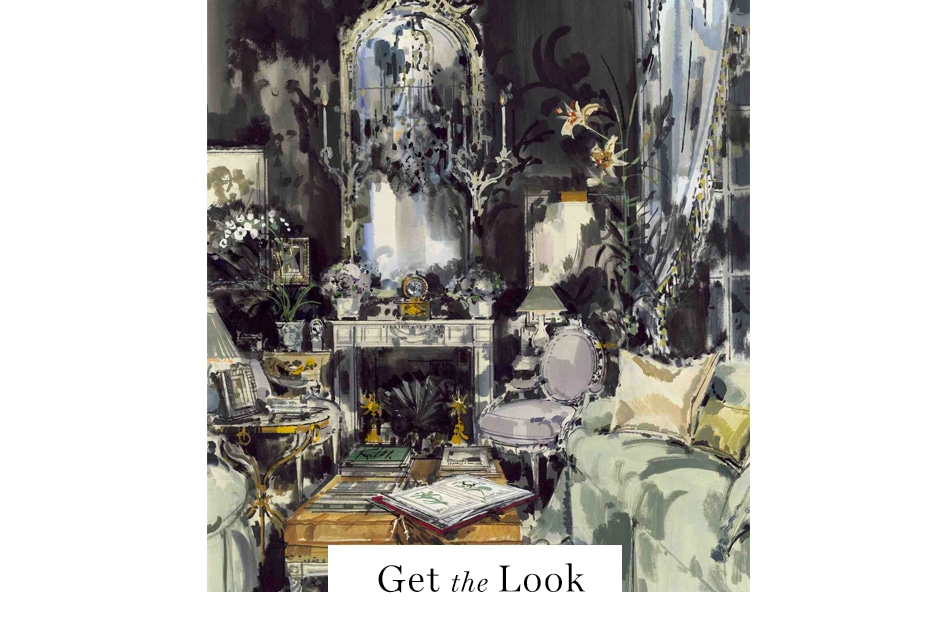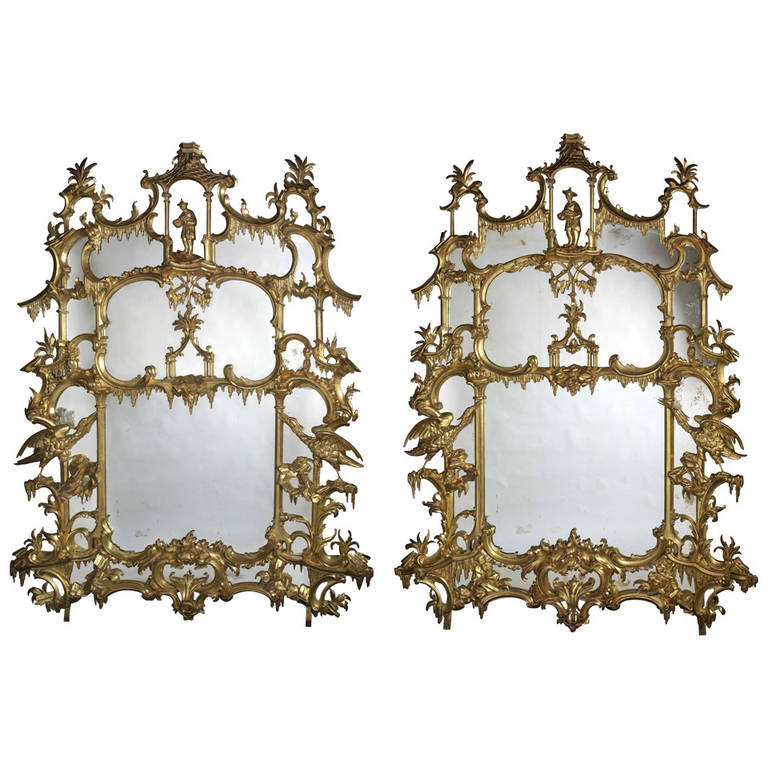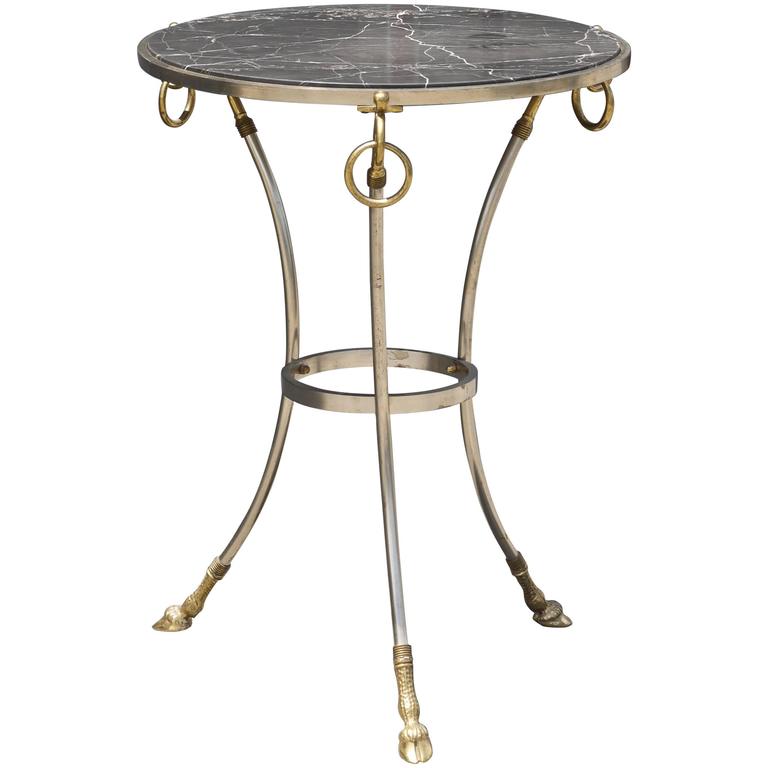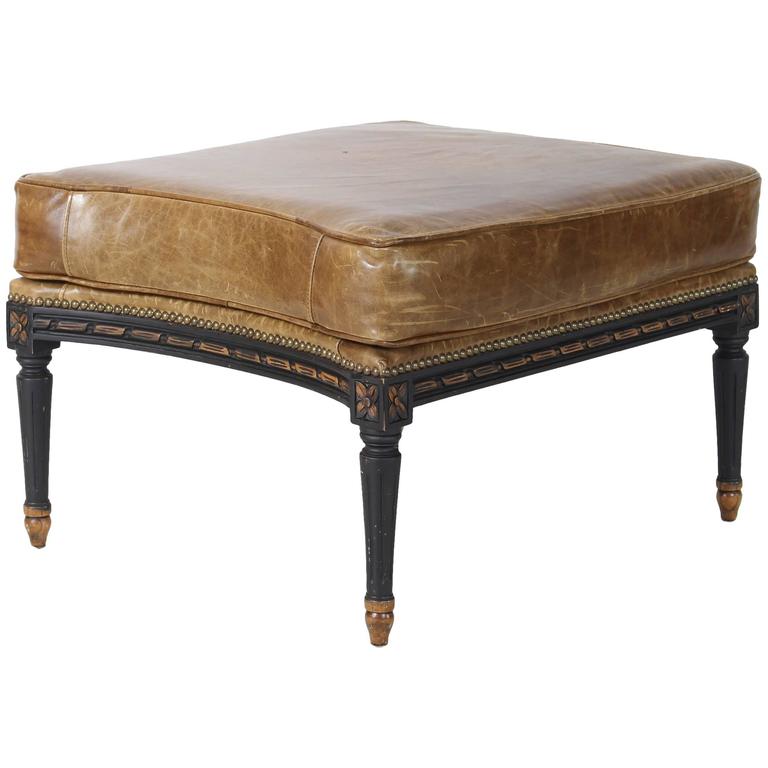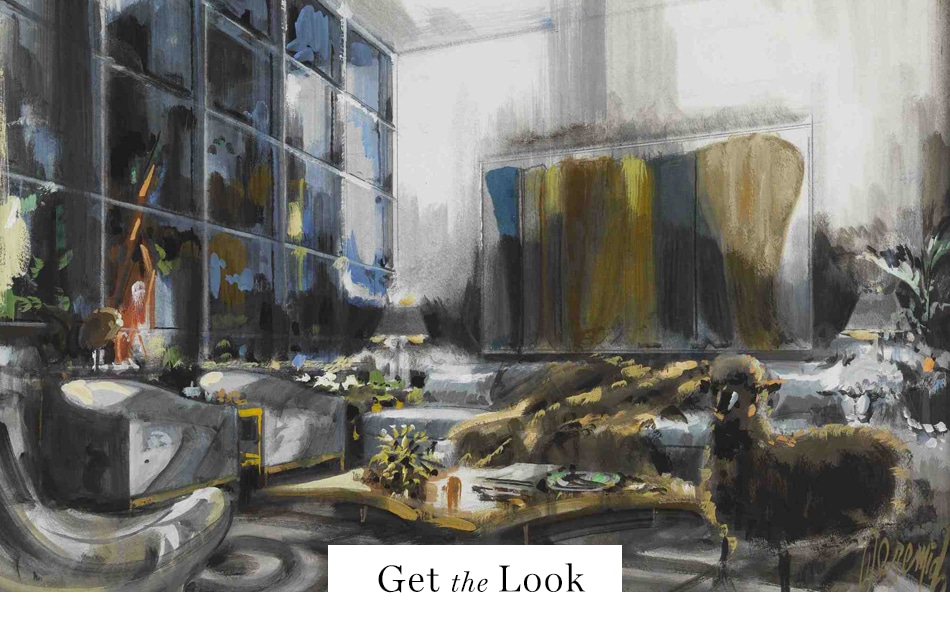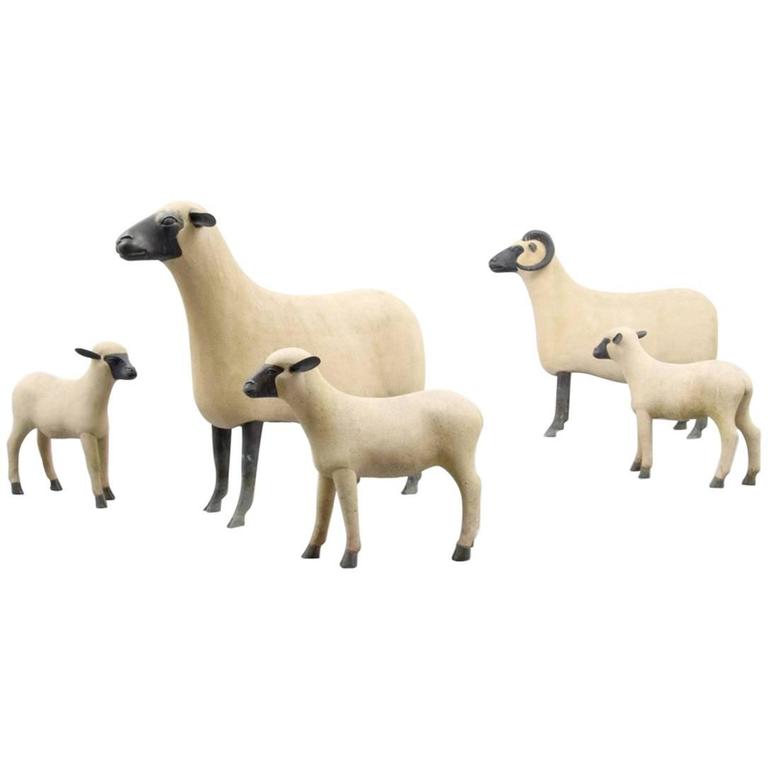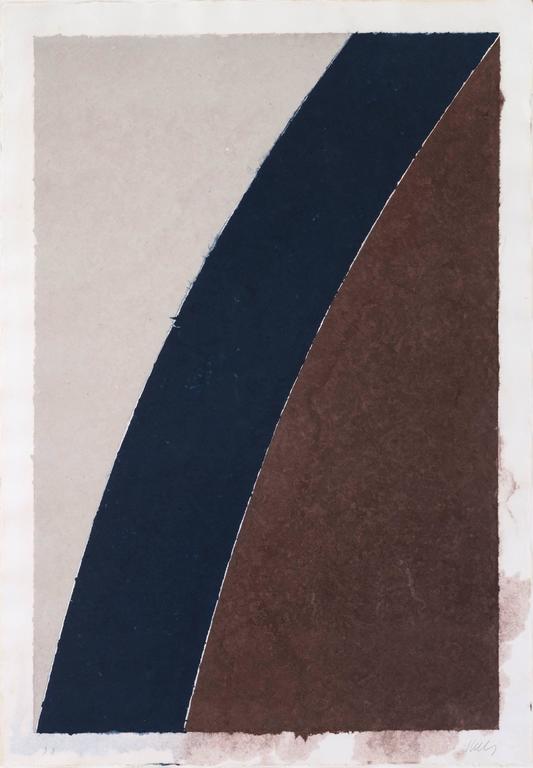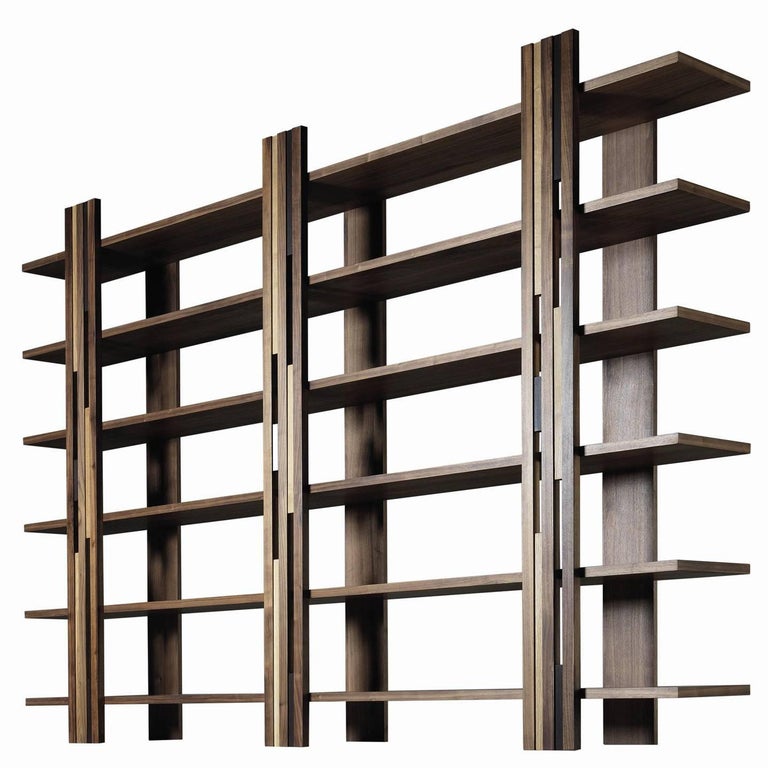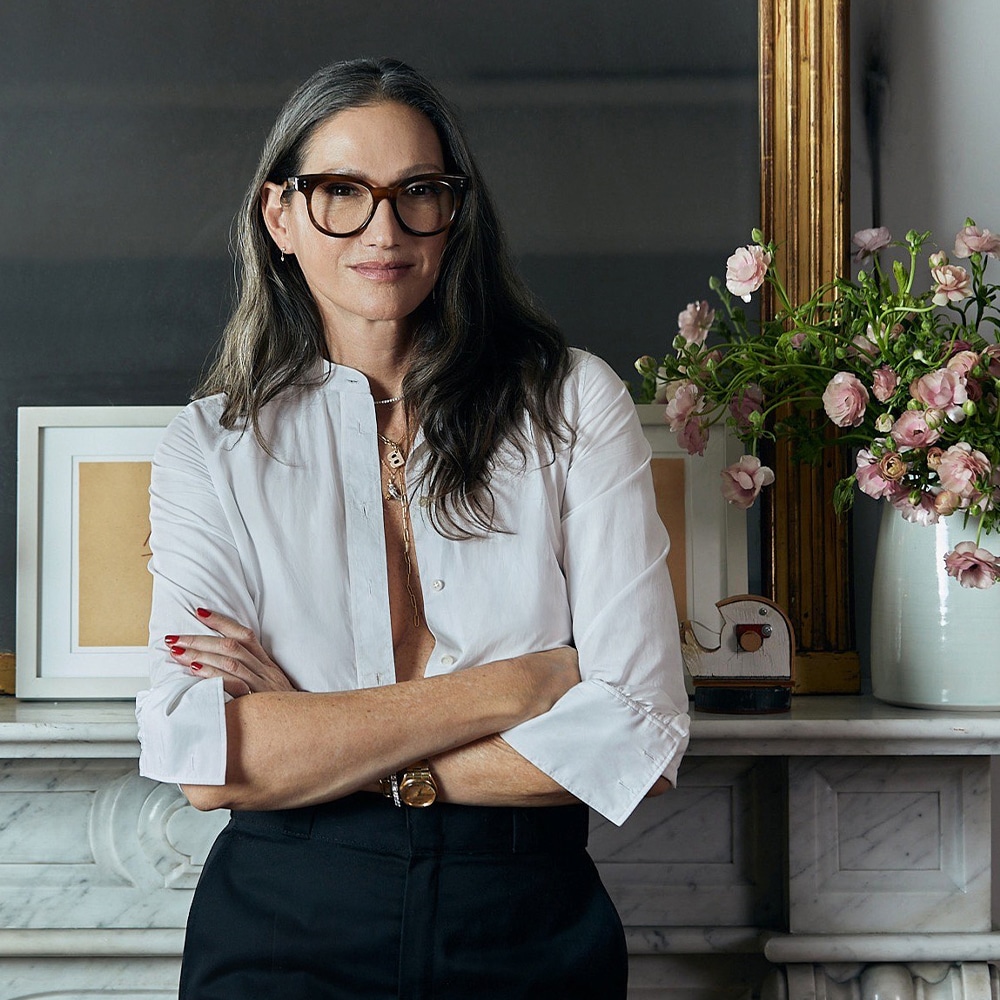
October 9, 2017Dubbed “Vermeer through the looking glass” by architect and frequent client Lee F. Mindel, interiors illustrator Jeremiah Goodman — seen above in 1956 in his first New York City apartment — died last month at the age of 94. Top: A ca. 1950 Goodman painting of the Hollywood Regency–style Los Angeles home of costume designer and couturier Gilbert Adrian. All images courtesy of Dean Rhys Morgan
Legendary interiors illustrator Jeremiah Goodman’s lush watercolors are packed with more telling details than any photograph in a shelter magazine. View his seductive room portraits, often painted in opulent hues, and you can almost hear the soft rustle of silk curtains or feel the sunlight streaming through well-dressed windows. A supreme talent with the eye of a magical realist, Goodman, who died in early September in New York at age 94, aimed to represent more than a room’s mere likeness. Over the course of his career, he depicted the atmospheric abodes of such style icons as decorator Tony Duquette, Vogue editor Diana Vreeland, architect Philip Johnson and jewelry designer Elsa Peretti.
His bold, fluid brushwork played with sunlight and shadow to evoke the personality of a room as well as the beauty of sumptuous fabrics, wallpaper and furnishings. It’s this well-chosen mix of fact and fantasy that has captivated design lovers for some 70 years. “His acuarelas capture just the right moment in time, when the sun floods the room,” says Peretti, whose transatlantic friendship with the artist continued across decades. “He was really fantastic — a man of taste.”
What makes Goodman’s oeuvre unique is his light take on reality. “Jeremiah found the best possible version of a place by leaving certain things out and leaving much up to your imagination,” says architect and longtime friend Lee F. Mindel, who engaged the artist for room portraits (“never ‘renderings’ ”) for clients. “He’d make a space look far more memorable through his painting than any photograph could.” His secret, according to Mindel: “He used a special tool, an oculus — convex glass — to check how these magnificent brushstrokes would look from far away. I called him ‘Vermeer through the looking glass.’ ”
Born in Niagara Falls, New York, in 1922, Goodman later moved with his family to Buffalo. He began drawing at an early age and dabbled in set design in Los Angeles before deciding his real métier was painting. He soon began focusing on making illustrations of interiors and furnishings for magazines, newspapers and retailers, including Lord & Taylor, whose print ads he illustrated in the 1950s. Mindel describes Goodman as “a nice Jewish boy from Buffalo with a wicked sense of humor who traveled the world working for royalty.” The Duchess of Windsor, philanthropist Betsy Bloomingdale, designer David Hicks and, more recently, Tiffany & Co. creative director Reed Krakoff invited him into their inner sanctums — bedrooms and living rooms that Goodman quickly sketched before heading back to his Manhattan studio to contemplate and complete the work. At other times, he worked from photographs.
His Instagram feed features a wealth of his images, as does his 2007 illustration-packed monograph, Jeremiah: A Romantic Vision, published by powerHouse. The latter includes a foreword by the late playwright Edward Albee, whose Manhattan loft is, of course, included in the book. Goodman’s dreamy room-scapes can also be found in the collections of New York’s Metropolitan Museum of Art and Cooper Hewitt Smithsonian Design Museum, as well as London’s Victoria and Albert, among other institutions.
“I can’t think of anyone else who chronicles design decade by decade through different fashions and movements,” says Mindel. “Jeremiah could articulate a moment of history, but you always knew it was his articulation.”
Here, a look at Goodman’s paintings of the interiors of some of society’s grandest grandees, paired with his own descriptions of what made these rooms so very special — all of which will appear in a posthumous powerHouse monograph, edited by Dean Rhys Morgan, due out next fall.
The Duchess Of Windsor’s French Countryside Bedroom
“About half an hour’s drive from Paris, the Mill was the country retreat of the Duke and Duchess of Windsor,” Goodman wrote of Wallis Simpson and David Windsor’s home in Le Moulin de la Tuilerie, France, which he painted around 1960. In the house — once the home of society portraitist Etienne Drian — “Wallis had a rather long, narrow bedroom with sloping beams, a little like a tent,” Goodman continued. “The Duchess emphasized this by draping the beams with striped taffeta. The colors in the curtains are repeated in the harlequin bedcover.”
Henri Samuel’s Paris Living Room
“All over the world people clamored for the ‘Samuel Style’ — Henri Samuel’s haphazard manner of mixing Louis XVI decor with abstract paintings,” Goodman recalled. “This eclecticism was reflected in his own home, a Louis XVI townhouse on Paris’s rue du Faubourg St.-Honoré. Visitors were amazed to discover a painting by Richard Lindner over an Empire table, neoclassical chairs beside a table by Diego Giacometti.” Goodman twice revised this painting, which he completed in 2002: “It was a difficult room to pin down. The towering palm in the corner always bothered me.”
President Ronald and Nancy Reagan’s Bel Air Sitting Room
“I was introduced to President and Mrs. Reagan at the theater one evening by Betsy Bloomingdale and her florist, David Jones,” Goodman explained of this 2000 work. “They put in motion the plan for me to paint the sitting room of the Reagans’ house in Bel Air. It was a fascinating room, almost museum like. Each vase or plate in the room had been presented to the President while he was in office and featured a plaque detailing the date of the presentation.”
David Hicks’s English Countryside Living Room
“David always got it spot on, and created a new concept of English style through his bold use of colors and the way he mixed antique and modern furnishings,” Goodman wrote of the late, great British designer. This 1968 painting of the living room of Hicks’s country house was a reworking of an earlier monotone sketch by the illustrator.
Reed and Delphine Krakoff’s New York Living Room
“While some couples take up hobbies like golf or tennis, Reed and his wife, Delphine, decorate — and ‘Decorate’ with a capital ‘D’! They have a knack of bringing together pieces to tell the most unlikely of stories,” Goodman enthused, citing as evidence the couple’s decision to place a François-Xavier Lalanne sheep beneath a Morris Louis painting. “Their taste is as catholic as my style of painting,” concluded Goodman, who completed this illustration of the Krakoffs’ former New York home.
